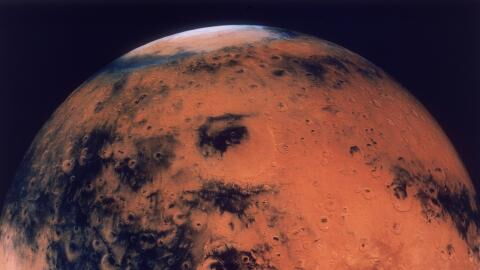Nothing like listening to the sound of the wind to relax... A relaxation method that could also work on Mars, as evidenced by the amazing sound recording revealed recently by NASA.
Discover our latest podcast
Sent to Mars by the US Space Agency on May 5th, and arriving at its destination on November 26th, the InSight spacecraft captured on December 1st the sound of a breeze sweeping the Martian surface at around 10 to 15 mph.
‘Capturing this sound was an unexpected surprise,’ mission leader Bruce Banerdt said in a statement. ‘One of the aspects to which our mission is dedicated is the measurement of motion on Mars, and of course that includes the movement caused by the sound waves,’ says the NASA scientist.
Two recordings are better than one
This surprising windy recording is made by two of the measuring devices that the probe is equipped with; a pressure sensor, responsible for continuously measuring the atmospheric pressure, as well as an ultra-precise seismometer, designed to take the pulse of the Martian surface.
‘The InSight lander acts like a giant ear,’ says Tom Pike of Imperial College London, and a member of the science team in charge of sensor design. ‘The solar panels on the sides respond to the fluctuations of the wind pressure... When we looked at the direction of the vibrations coming from the solar panels, it corresponded to that expected for the wind at our landing point,’ the scientist continues. A correlation which then allowed the team to attribute with certainty this vibration to the Martian wind.
Recorded both by the seismometer and the pressure sensor of the Martian probe, the wind sweeping the surface of the Red Planet is, however, inaudible to humans. Located below the lower limit of the frequencies picked up by the human ear, the sound generated from the seismometer data has been boosted by two octaves by NASA engineers, in order to make it more easily perceptible. This treatment was also done to the sound waves resulting from the measurements of the pressure sensor, accelerated a hundred times in order to increase its frequency.
More ‘sweet music’ coming soon
These tantalising audio extracts are just the beginning of what NASA could reveal in a few months. In a little over a year, the Mars 2020 rover should also land, this time equipped with two ultra-sensitive microphones. A first, it will be responsible for capturing the sound generated by the arrival of the machine on the surface of Mars, and secondly it will be able to capture the frequencies generated specifically by some Martian materials when they are struck by a laser beam, in order to precisely identify their nature. A wind of innovation seems to be decidedly blowing on the surface of the Red Planet!















